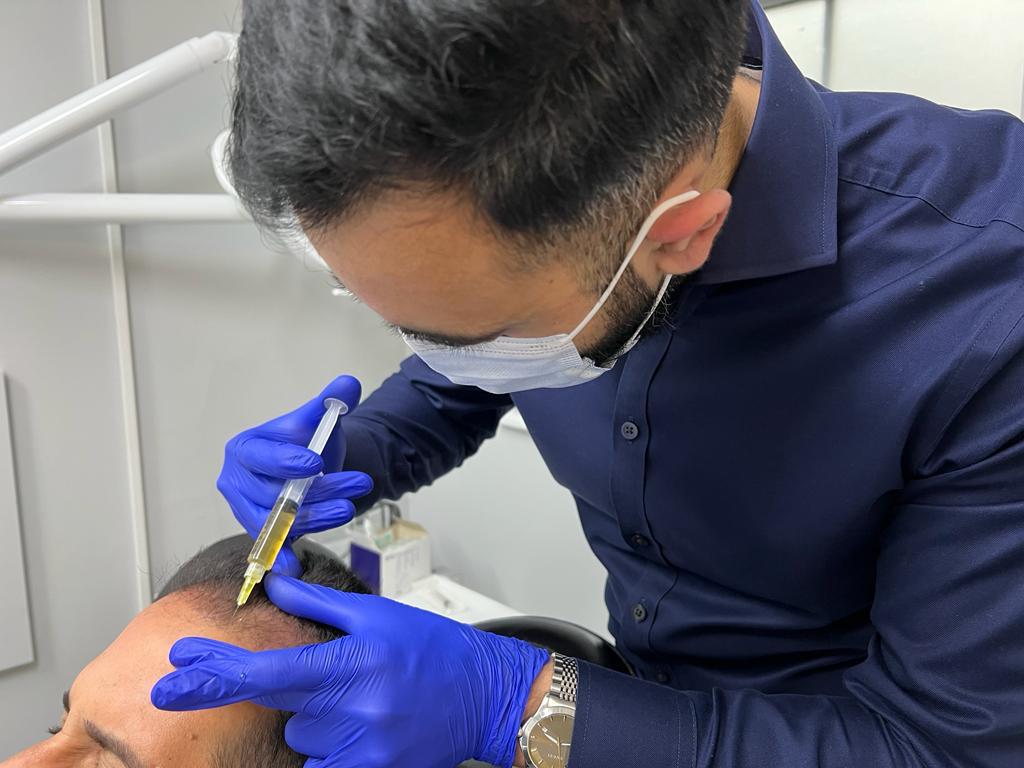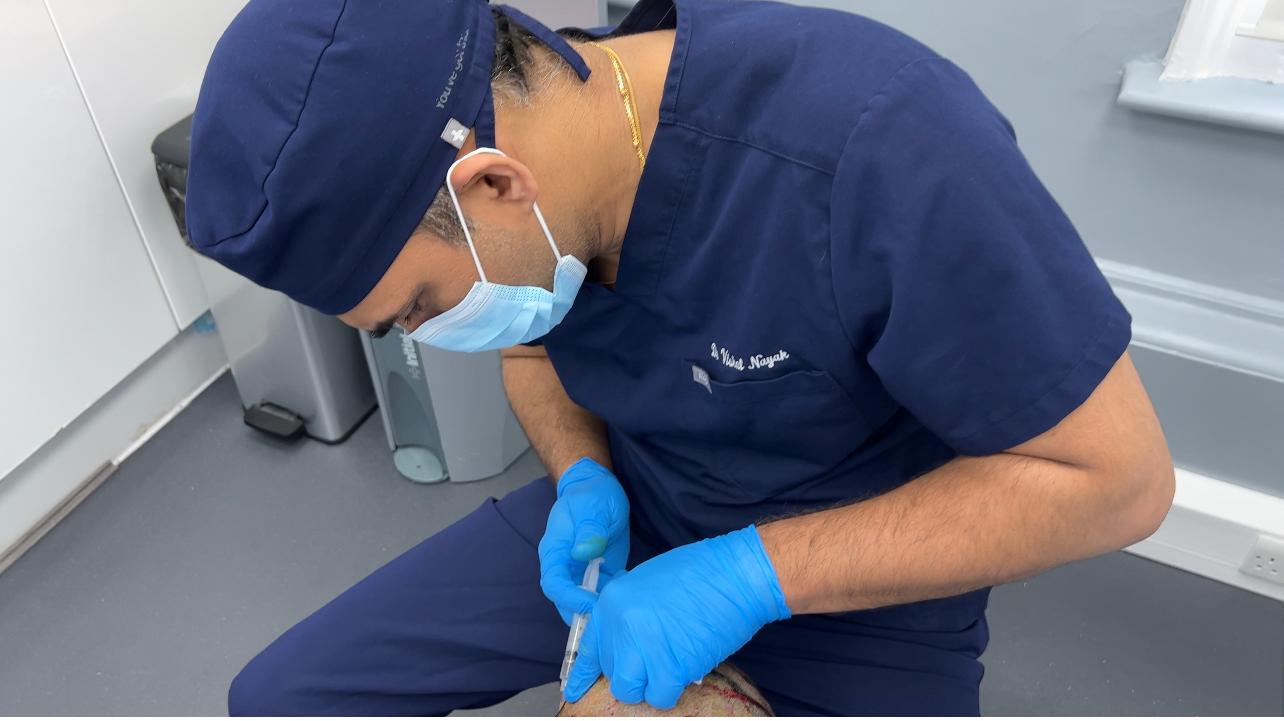What is PRP ?
PRP (Platelet-rich Plasma) therapy is a medical treatment that uses a person’s own blood to promote healing and tissue regeneration. The procedure involves taking a sample of the person’s blood, which is then processed in a centrifuge to separate the platelets from the other components of the blood. The concentrated platelet-rich plasma is then injected into the area of the body that needs to be treated.
PRP therapy is used for a variety of medical conditions and aesthetic purposes. In the field of dermatology, PRP therapy is used to promote hair growth, skin rejuvenation, and acne treatment. In hair restoration, PRP is used to stimulate hair growth by increasing blood flow and nourishment to the hair follicles.
PRP therapy is also used in orthopedics to promote healing and tissue regeneration in conditions such as arthritis, tendinitis, and ligament injuries. Additionally, it’s used in plastic surgery to improve the healing of surgical incisions and to enhance the results of facelift and other cosmetic procedures.
The procedure is considered safe and effective, and the risk of complications is low. However, as with any medical procedure, it’s important to consult with a qualified and experienced practitioner to ensure that the procedure is performed safely and effectively.
It’s worth noting that PRP therapy is not a one-time treatment, multiple sessions are required to see the desired results. And it’s not a substitute for traditional medical treatments, it’s considered as an adjuvant therapy that can enhance their results.
What Is PRP Treatment Success Rate?
The success rate of PRP treatment, also known as platelet-rich plasma treatment, varies depending on the condition being treated and the individual patient. In general, PRP treatment has been found to be effective in promoting hair growth and thickening existing hair follicles
In the case of hair loss, multiple studies have shown that PRP treatment can be effective in promoting hair growth and slowing down hair loss. The success rate of PRP treatment for hair loss is estimated to be around 70-80%.
However, it is important to note that these success rates are estimates and may not apply to every individual. Factors such as the individual’s medical history, their overall health, and the severity of their condition can all affect the outcome of the treatment. It’s important you can come in for a consultation / hair check so the specialist can advise you if the PRP treatment is suitable for your current stage of hair loss.
What To Expect After PRP Hair Treatment?

After a PRP hair treatment, you can expect to see some mild redness and swelling on the treated area. This is normal and usually subsides within a few hours. The procedure itself is non-surgical, so there is no downtime or recovery period required.
You will be able to return to your normal activities immediately after the treatment. Your practitioner will provide you with specific aftercare instructions to follow. These may include avoiding certain activities, such as exercise and swimming, for a period of time after the treatment.
It’s not uncommon to see a shedding phase after PRP treatment, where the hair that is in the telogen phase (resting phase) will fall out, this is normal and it’s a good sign that the treatment is working.
You may also be asked to use a specific shampoo or topical treatment to help enhance the effects of the PRP treatment.
It’s important to note that the effects of PRP hair treatment are not immediately visible. It can take several weeks to several months to see the full effects of the treatment. It’s important to be patient and to follow the aftercare instructions given to you by your practitioner.
Most people need between 2-3 treatments with a 4-6 weeks intervals between sessions to achieve optimal results.
PRP treatment can be used in combination with other hair loss treatments, , to enhance their effects and to achieve better results. The treatment can also be repeated periodically to maintain the effects.
Hair Loss Conditions Treated by PRP Therapy
PRP therapy can be used to treat a variety of hair loss conditions, including:
- Androgenetic Alopecia: Also known as male or female pattern baldness, androgenetic alopecia is caused by a combination of genetics and hormones.
- Alopecia Areata: An autoimmune disorder that causes hair loss in patches on the scalp and other parts of the body.
- Telogen Effluvium: A condition characterized by a temporary increase in hair shedding, often caused by stress, hormonal changes, or certain medications.
- Traction Alopecia: A type of hair loss caused by excessive tension or pulling on the hair, often seen in people who wear tight hairstyles or extensions.
- Scarring Alopecia: A type of hair loss caused by damage to the hair follicles, resulting in permanent hair loss.

Who is the ideal candidate for PRP Hair Treatment?
The ideal candidate for PRP hair treatment is someone who has experienced hair loss or thinning and is in good overall health. PRP therapy is most effective for individuals with early stages of hair loss, as it works to stimulate hair growth and improve the overall health of the hair and scalp. It is also suitable for people who have a family history of hair loss, those who have experienced hair loss due to medical conditions or treatments, or those who want to enhance the results of other hair restoration treatments. It’s important to consult with a hair transplant specialist or a healthcare professional to determine if PRP therapy is the right treatment for you.

